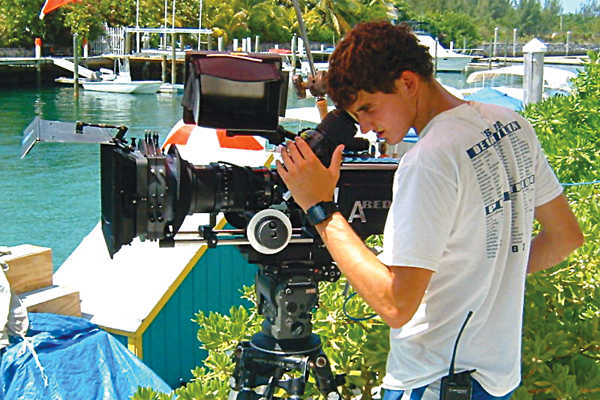Format simply offers new and exciting ways to shoot movies
RED digital camera, Photo: Rsgden, CC
This Wednesday, a select number of moviegoers in Canada and the United States got to see Christopher Nolan’s Interstellar two days ahead of its official release date. While early screenings of highly anticipated films are nothing new, the difference here is that the sci-fi epic was exclusively shown in theatres that still support 35-millimetre and 70-millimetre film.
These early screenings (organized by Nolan) were meant as a big “fuck you” to a movie industry that has been rapidly converting to digital projectors over the last couple of years, with plans to eventually phase out film production altogether.
According to old-school filmmakers like Nolan and Quentin Tarantino, traditional photochemical film is an inherently superior way to shoot movies, and this new obsession with digital video is a sign that the industry is going downhill.
While it is sad to see such a rich art form slowly go extinct, the idea that digital video is the death of cinema is a ridiculous assertion, especially since this new format offers independent filmmakers a breadth of opportunity and gives seasoned veterans new and exciting ways to make movies.
One of the only valid arguments in favour of film over digital is that the images captured using celluloid are of a remarkably better quality. While that may have been the case in the late 1990s and early 2000s, the picture quality of current digital film cameras is so good that most movie goers can’t tell the difference between the two formats. In fact, the latest version of the popular RED camera has been used to shoot recent movies like Gone Girl and Neighbors, which demonstrates that these digital cameras are capable of displaying an impressive pixel resolution without having to sacrifice cinematic colour texture, lighting, or dynamic range.
Not only do these cameras capture amazing images, but the digital filmmaking process is also significantly cheaper than shooting on film. Without having to deal with the financial burden of developing film, new prospective filmmakers are being given the creative freedom to make the movies that they want to make. In the documentary Side by Side, indie darling Lena Dunham even claims that she would have never become a filmmaker had it not been for “digital video culture,” since this format allowed her the freedom to “experiment with making movies in a really small, private way.”
As such, digital video is quickly becoming the go-to format for many recent film school graduates and for anybody else who wants to realize their artistic vision without having to sell their soul to a creatively bankrupt studio head.
Outside of the independent circuit, tons of critically acclaimed directors have willingly abandoned film altogether, saying that digital allows them to shake up the conventional production process.
Directors like Danny Boyle, Steven Soderbergh, and David Fincher say the physical lightness of digital cameras allows for more fluid and dynamic camera movement. Auteur Robert Rodriguez says digital video also eliminates much of the annoying guesswork often associated with the filmmaking process, since you can edit footage immediately after shooting it, instead of waiting for film to be developed overnight. Surrealist David Lynch even claims that shooting digitally can enhance an actor’s performance, since there is no overwhelming pressure for them to succeed while precious film is being wasted during a take.
In this light, digital video should not be seen as some inferior product that’s threatening the integrity of cinema. Instead, it should be viewed as a new canvas or toolbox that will save the industry boatloads of money while attracting the attention of a whole new generation of filmmakers.
Still, the growing irrelevance of an art form that’s more than 100 years old is certainly nothing to celebrate. But while traditional photochemical film is gradually on its way out, I’m at least comforted by the idea that it will be replaced by digital video—a format that will provide aspiring cinematic auteurs with a better and more efficient way to make movies.





